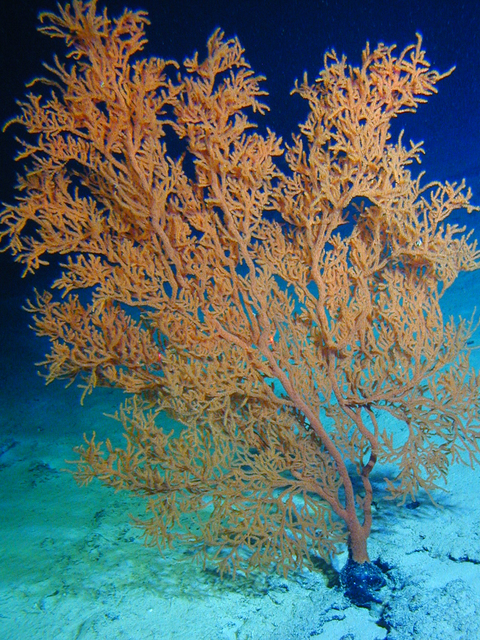A state known for long life in the human realm now has another distinction: It’s the only home of the world’s oldest marine organism.
A state known for long life in the human realm now has another distinction: It’s the only home of the world’s oldest marine organism.
That’s the latest finding of researchers at the NOAA Office of National Marine Sanctuaries and the Smithsonian Institute, who have discovered and named a new 4,000-year-old black coral found only in Hawaiian waters. Inhabiting depths from 1,000 to 1,600 feet, Leiopathes annosa — meaning “long-lived” — populates the seafloor and engineers habitat for fish and other species in a relative wasteland.
Submersible dives conducted by the Hawaii Undersea Research Laboratory found the coral from the Big Island to the Northwestern Hawaiian Islands, said Daniel Wagner, a research specialist with the Papahanaumokuakea Marine National Monument.
“We can pride ourselves by being home to the oldest species on the planet,” said Wagner, who co-authored a research paper published this week in the scientific journal Zootaxa with Dennis Opresko from the Smithsonian.
By measuring growth rings similar to the technique used to count tree rings — except on a much more minute level — scientists knew previously how long the coral lived. But they also mistakenly lumped the organism with a species found in the Mediterranean Sea.
Many months of painstaking examination took Wagner and fellow researchers through archives at the Bishop Museum in Honolulu and the National Museum of Natural History in Washington, D.C., where they compared the coral against every other species they could find from around the globe.
“We observed this species was very distinct,” Wagner said. “Based on that, we named and described it.”
The specimens were collected by a Pisces research submersible. The largest coral found was about 6 feet high.
The discovery serves to show how little is known about the deep ocean, Wagner said.
“Every time we mount expeditions like these, we find new things,” he said.
“This research emphasizes how much can be learned from studying deep and pristine environments such as those found in the remote Papahanaumokuakea Marine National Monument, of which only a small fraction has been explored,” he said.
An expedition in the Northwestern Hawaiian Islands using submersibles in 2003 collected a couple of dozen previously unknown species of coral and sponges, Wagner said.


